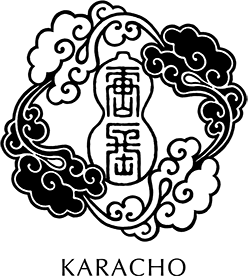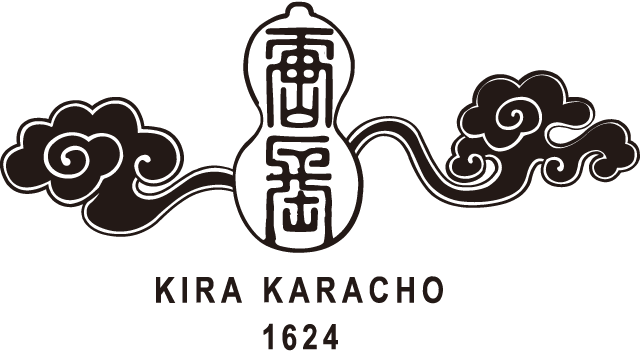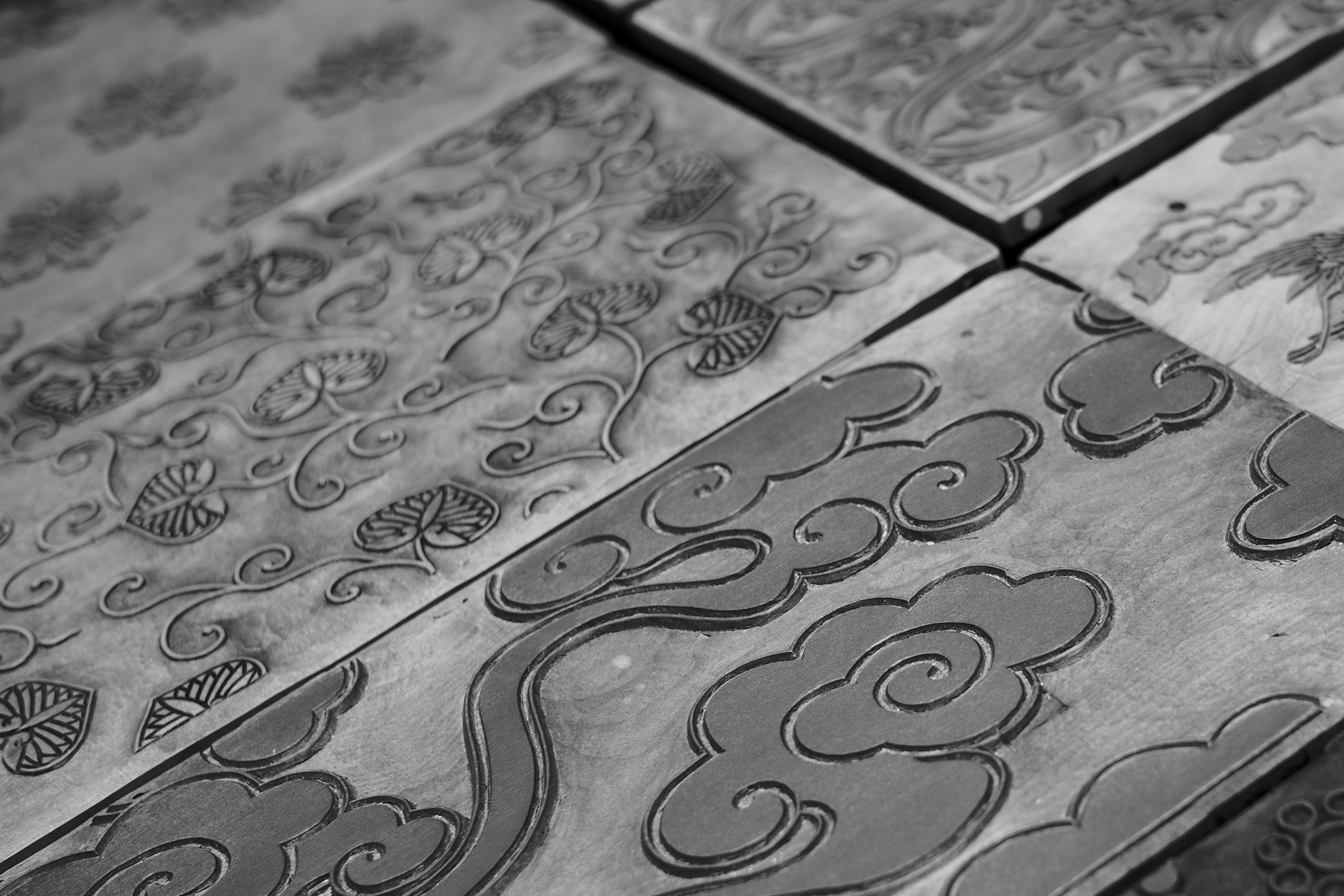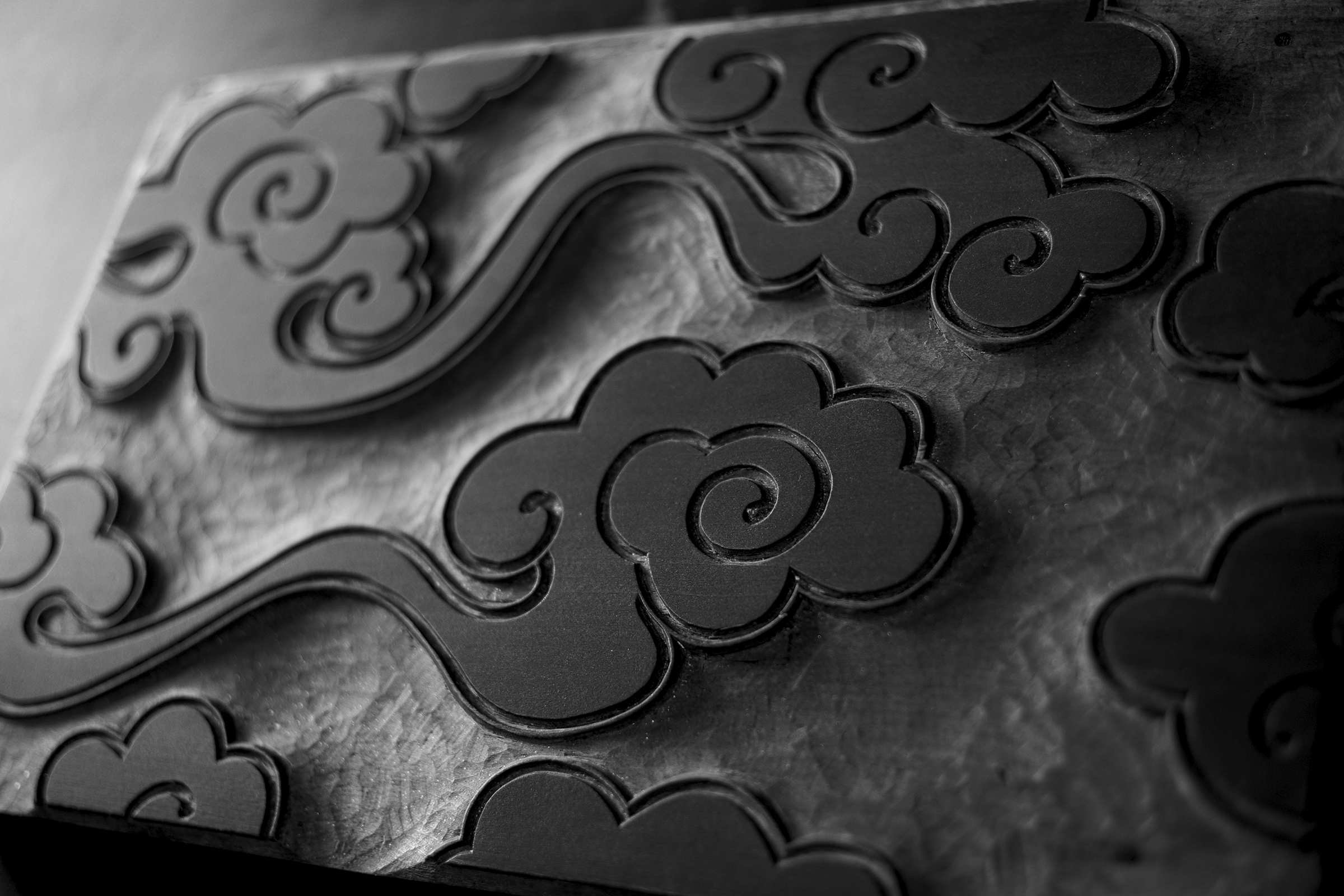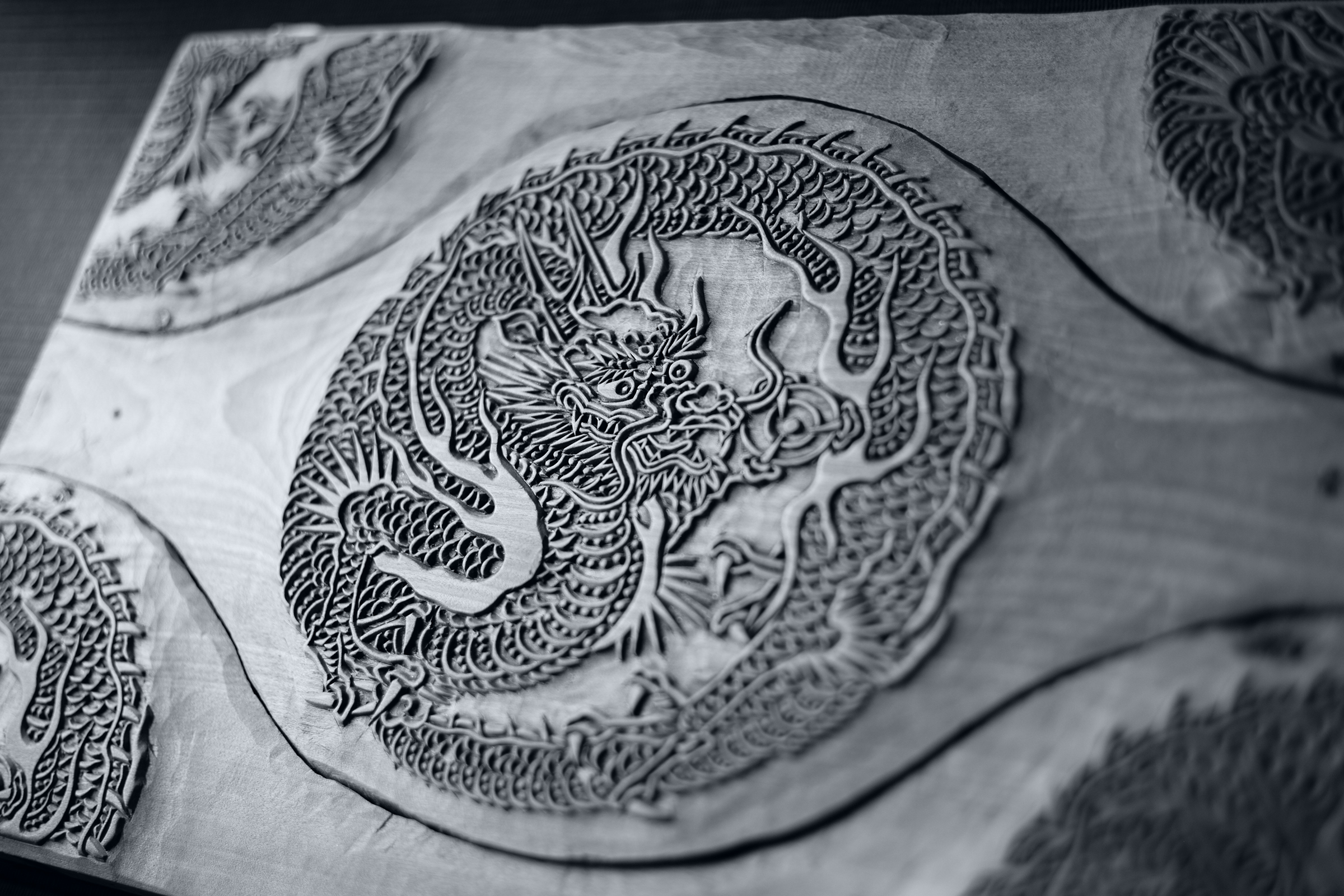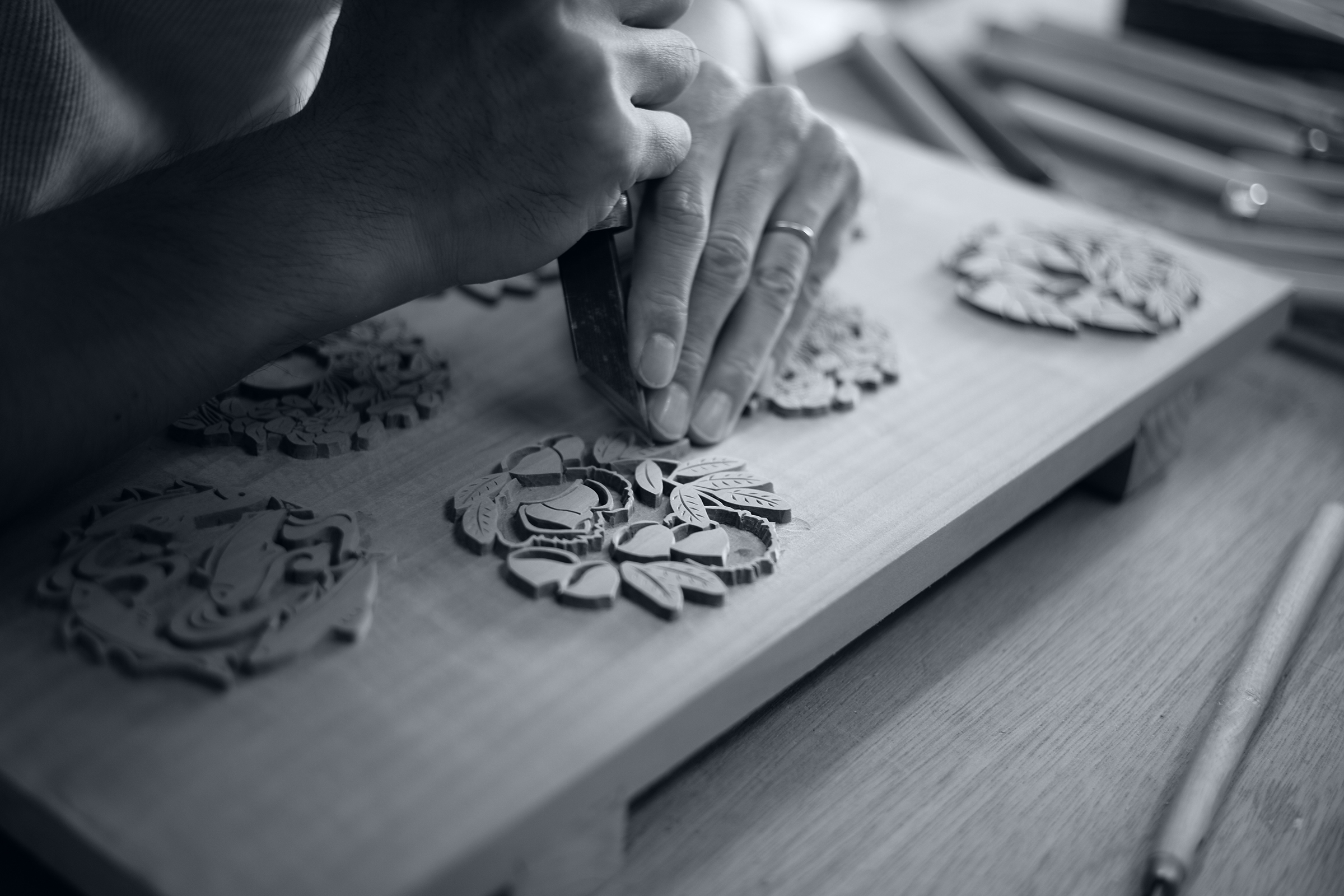Woodblock Dimensions
There is great variety within the woodblocks handed down by generations of Karacho craftsmen. Some reflect the global world view of continental Eurasian culture that traveled across the Silk Road, while others were refined within a uniquely Japanese culture. The patterns are incredibly diverse, with some depicting scenes from nature, while others are based on geometry. The world view of patterns that has traversed the world for hundreds or even thousands of years is alive in these woodblocks, unchanged since the Edo Period. The majority of the woodblocks we use at Karacho are about 1/12th the size of a single fusuma sliding door, and they are called juni-mai-bari (juni = 12). In addition to these, we also use ju-mai-bari (ju = 10), go-mai-bari (go = 5), roku-mai-bari (roku = 6), and yakimochi-ita. Most of the juni-mai-bari woodblocks date from the Edo Period and have a vertical length of 36 cm and horizontal width of 58.75 cm. Many of the ju-mai-bari woodblocks come from the Meiji (1868 – 1912) and Taisho (1912 – 1926) periods and measure 43.59 cm vertically by 58.75 cm horizontally. Almost all of the woodblocks have been carved from magnolia wood. Magnolia wood is a very hard wood, which makes it long-lasting, and it also has a fine texture and a straight grain that do not interfere with the delicacy or intricacy of the woodblock carvings.
